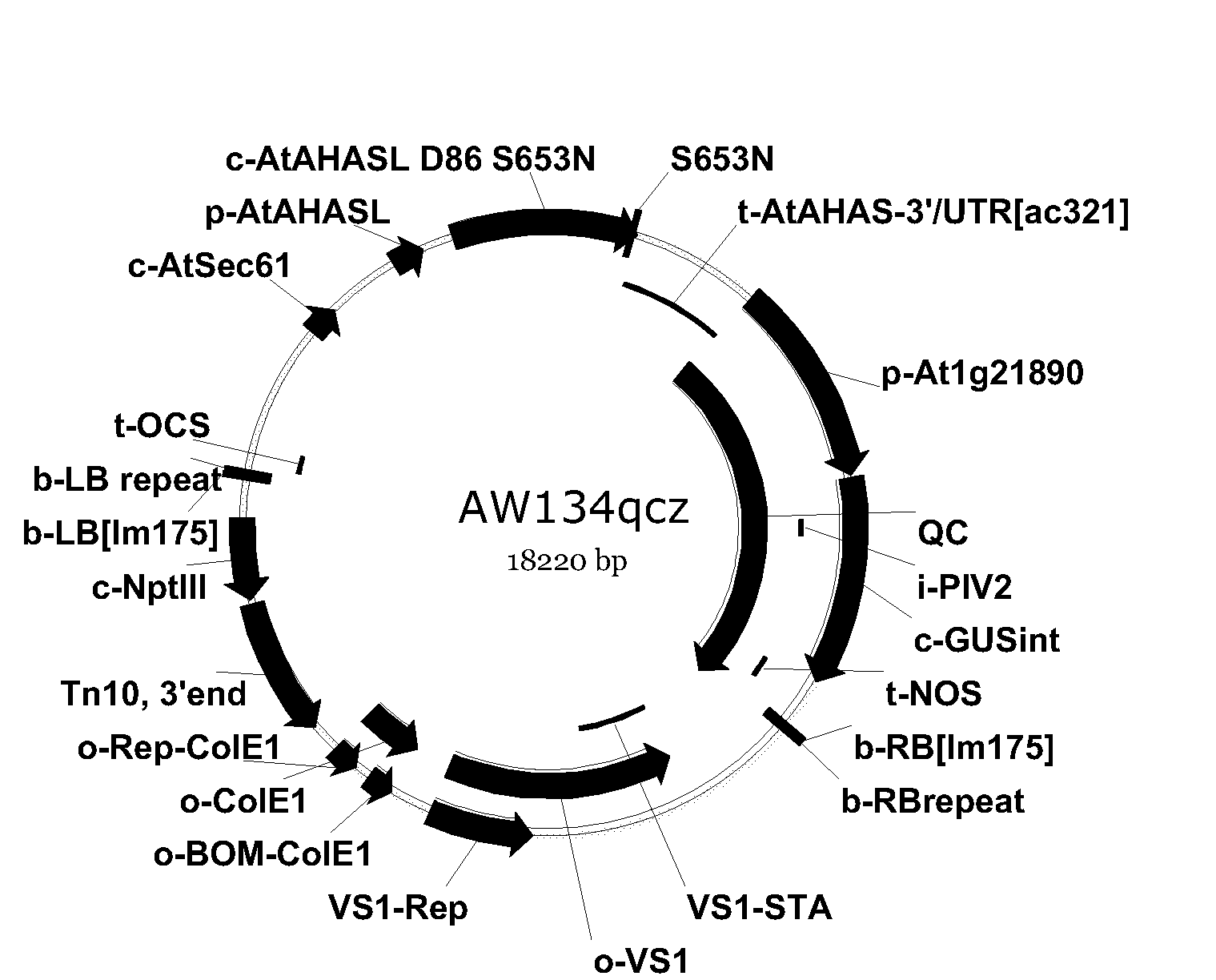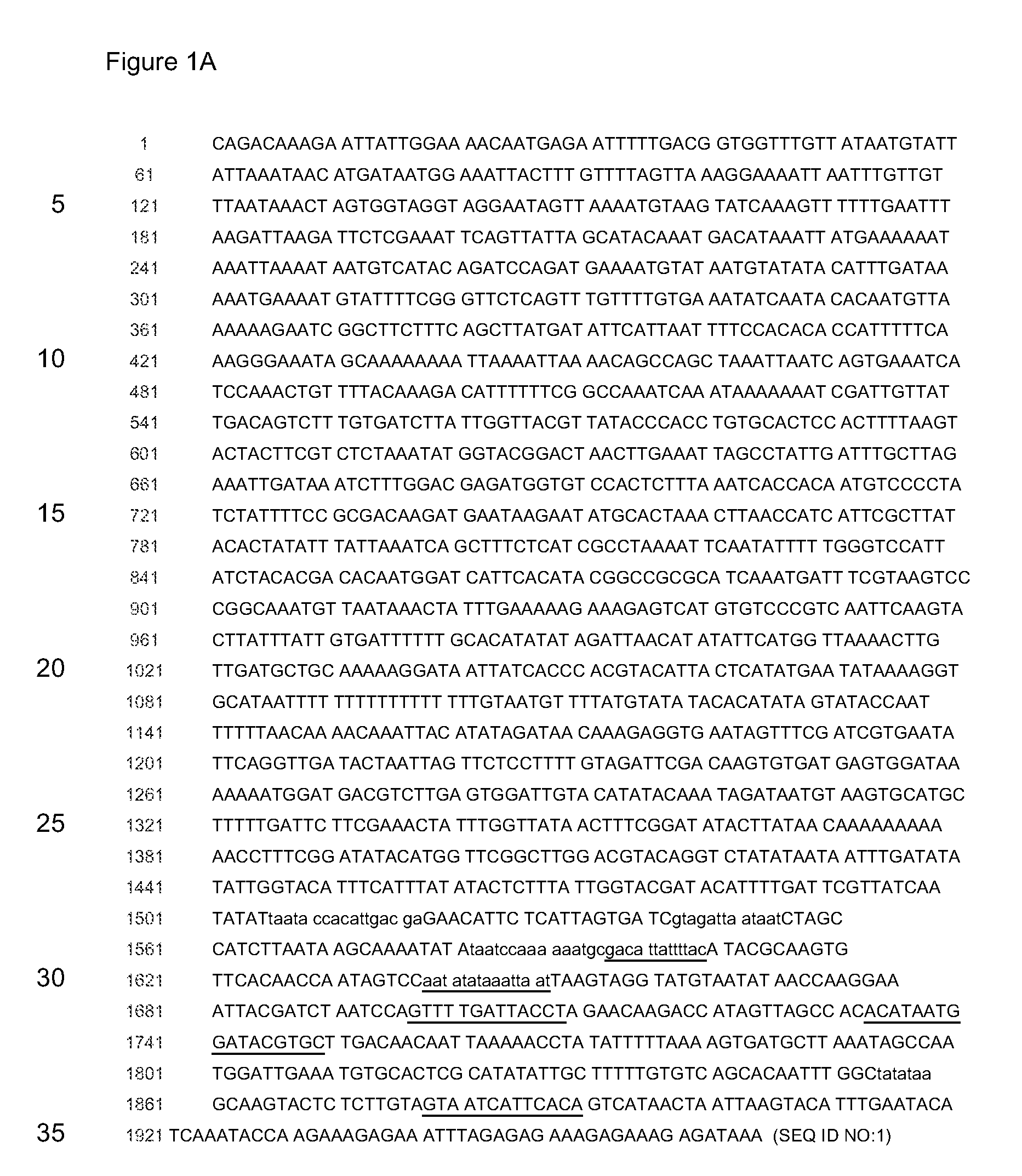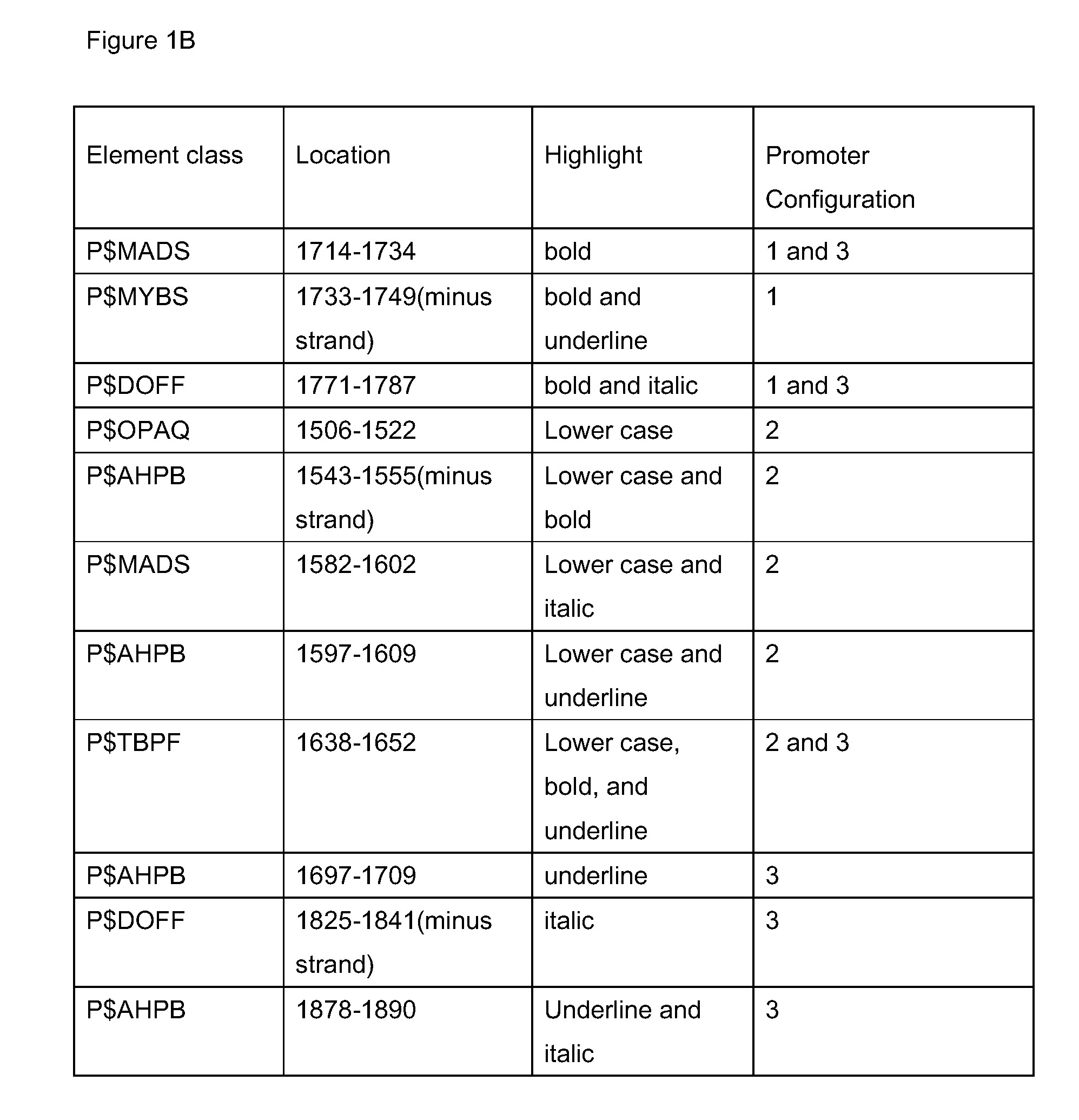Plant metabolite exporter gene promoters
- Summary
- Abstract
- Description
- Claims
- Application Information
AI Technical Summary
Benefits of technology
Problems solved by technology
Method used
Image
Examples
example 1
Cloning of Plant Drug / Metabolite Exporter Gene Promoters from Arabidopsis
[0096]Arabidopsis (Columbia ecotype) genomic DNA was extracted using the Qiagen DNAeasy Plant Minikit (Qiagen). The 1,967 bp (SEQ ID NO:1) and 1,950 bp (SEQ ID NO:2) genomic DNA regions (putative promoter sequences) directly upstream of the ATG codon including 5′-untranslated region corresponding to Arabidopsis plant metabolite exporter genes with locus identifiers, At1g21890 and At4g08290 respectively, were cloned using standard PCR amplification protocol. For this, approximately 0.1 μg of Arabidopsis genomic DNA was used as the DNA template in the PCR reaction. The primers used for PCR amplification of the Arabidopsis promoter sequences are shown in FIG. 11 and were designed based on the Arabidopsis Genomic sequence Database (TAIR). The primer sequences described by SEQ ID NO:7 and SEQ ID NO:9 contain the PstI restriction site for ease of cloning. The primer sequences described by SEQ ID NO:8 and SEQ ID NO:1...
example 2
Cloning of MtN21-Like Metabolite Exporter Gene Promoters from Soybean
[0099]As described more fully in commonly assigned US patent application, U.S. Ser. No. 60 / 743,340, incorporated herein by reference in its entirety, two polynucleotides encoding soybean MtN21 homologs, GmMtN21-1 (GM50862200, SEQ ID NO:5) and GmMtN21-2 (GM50444087, SEQ ID NO:4) were identified as being up-regulated in syncytia of SCN-infected soybean roots, using a bioinformatics approach. FIG. 4 depicts the sequences of GmMtN21-1 and GmMtN21-2. The GmMtN21-2 cDNA sequence (SEQ ID NO:4) was determined to be full-length since there is a TAG stop codon starting at bp 59 upstream and in the same frame as the ATG start codon of the encoded Mtn21 open reading frame which starts at base pair 74. The alignment of the sequences of GmMtN21-2 (designated GM50444087, SEQ ID NO:4) and GmMtN21-1 (designated GM50862200, SEQ ID NO:5) shown in FIG. 12 indicates that GmMtN21-1 is likely to be a partial sequence missing approximatel...
example 3
Binary Vector Construction for Transformation and Generation of Transgenic Hairy Roots
[0102]To evaluate the expression activity of the cloned promoters, gene fragments corresponding to nucleotides 1-1967 of SEQ ID NO:1, nucleotides 1-1947 of SEQ ID NO:2 and nucleotides 1-791 of SEQ ID NO:3 were cloned upstream of a GUS reporter gene (bacterial β-glucuronidase or GUS gene (Jefferson (1987) EMBO J. 6, 3901-3907) to create the binary vectors pAW134qcz, pAW219qcz, and pAW223qcz, respectively, as shown in FIGS. 6 through 8. The plant selection marker in the binary vectors was a mutated AHAS gene from A. thaliana that conferred tolerance to the herbicide ARSENAL (imazapyr, BASF Corporation, Florham Park, N.J.). The selectable marker mutated AHAS was driven by the Arabidopsis AHAS promoter.
[0103]The soybean cyst nematode can be propagated on normal soybean root explants. However, this technique requires the continual establishment of root explants because these organs have a determinant pe...
PUM
| Property | Measurement | Unit |
|---|---|---|
| Dynamic viscosity | aaaaa | aaaaa |
| Power | aaaaa | aaaaa |
| Power | aaaaa | aaaaa |
Abstract
Description
Claims
Application Information
 Login to View More
Login to View More - R&D
- Intellectual Property
- Life Sciences
- Materials
- Tech Scout
- Unparalleled Data Quality
- Higher Quality Content
- 60% Fewer Hallucinations
Browse by: Latest US Patents, China's latest patents, Technical Efficacy Thesaurus, Application Domain, Technology Topic, Popular Technical Reports.
© 2025 PatSnap. All rights reserved.Legal|Privacy policy|Modern Slavery Act Transparency Statement|Sitemap|About US| Contact US: help@patsnap.com



